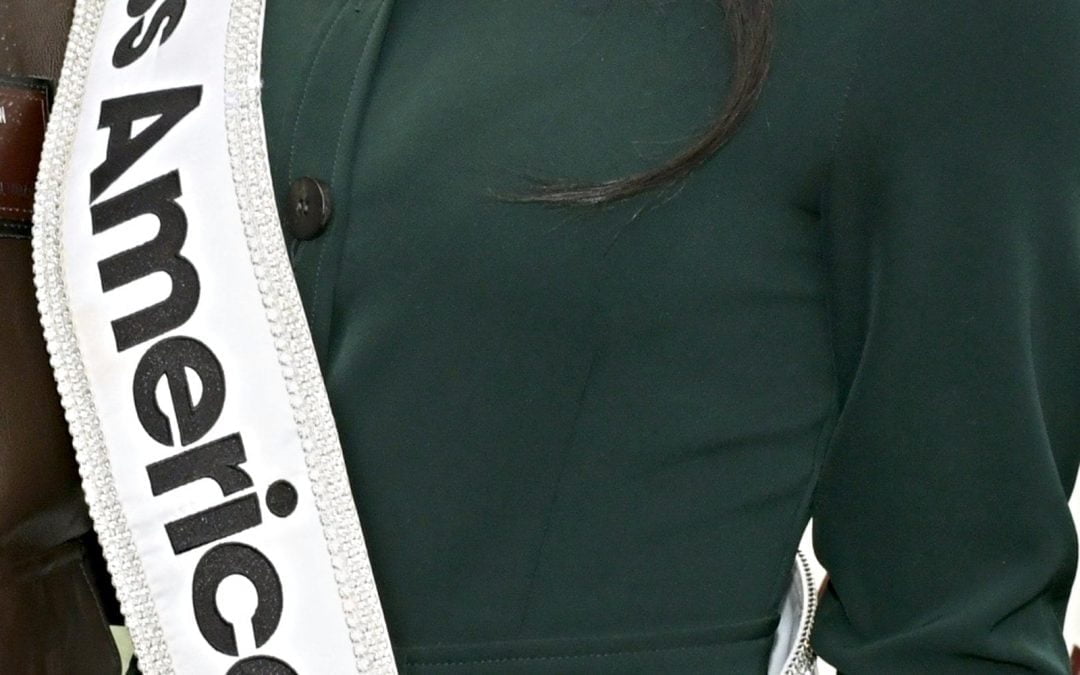Miss America is many things and runs the risk of being everything – and thus nothing.
In fact, many people consider Miss America as trivial, inconsequential and, now, an outdated affront.
But Miss America, like America itself, has been reinventing itself, and in doing so has become a trope, a deep and complicated trope, for what America is and hopes to be.
In 2018, Miss America tried to recreate herself yet again, billing the new and improved contest as Miss America 2.0. This rebirth occurred after the ousting of Sam Haskell from his position as Miss America’s CEO.
Leaked emails revealed that Haskell and others had engaged in derogatory talk about current and former Miss Americas.
Gretchen Carlson grabbed the reins and, along with some of her Miss America sisters, sought to redeem the Miss America pageant by giving it what they deemed a much-needed makeover.
Most notably, Carlson announced in June 2018 that Miss America would no longer have a swimsuit competition.
People representing an assortment of opinions about Miss America 2.0 descended on Atlantic City for pageant week in September 2018. An air of uncertainty clouded the week.
Some fans wondered if the pageant would survive without the one thing that had been there since the beginning while others were sure that it would not.
There was concern about the “girls” who had trained for one kind of contest and would be competing in another. That it was not fair to change the rules midstream was a common refrain.
Increased empowerment rhetoric saturated the week from introductions to the printed program to onstage presentations to the merchandise to the television broadcast. Miss America 2.0 was sleek and modern. She was agent, not object.
But grumbling – and a lawsuit – continued even after pageant week. The controversy over the “soul” of the pageant paraded on, each side convinced that they knew who Miss America should be.
Such mixed reviews harken back to the earliest days of the pageant. Dropping the swimsuit competition appeared to be just the latest in a long history of gimmicks to make the pageant relevant, relatable and respectable. It was yet another attempt to keep the pageant alive.
In the early 20th century, burlesque faced a similar dilemma. It existed in a saturated market where everything it offered could be found elsewhere. But instead of vying for respectability, burlesque went for spectacle.
“The true strip was burlesque’s last-ditch and ultimately unsuccessful strategy to stay alive,” Robert C. Allen said in his book, “Horrible Prettiness: Burlesque and American Culture.”
“It represents not the symbol of burlesque’s golden age – although it is remembered as such – but rather its ultimate failure to sustain a performance medium sufficiently distinct in its appeals from other forms to draw an audience.”
The tactic did not work, and, today, burlesque is remembered for what it was at the end and not what it was in its heyday. One wonders if a similar thing will happen to Miss America.
Miss America was birthed during this time period. The pageant found a way to thrive despite not offering the same level of “tease” available elsewhere.
However, it eventually faced the same dilemma to remain relevant in a world where all that it offered was available somewhere else. The glitz. The glamour. The sex. The service. The entertainment. The competition. The beauty.
And, these things were bigger, better, brighter and bolder in other spheres. And yet Miss America survived.
The Miss America pageant wove these threads together in a unique way, offering competitors the chance to be crowned Miss All-Around. The woman chosen excelled at everything American culture valued, not just one component. She had it all.
That is why Miss America worked. And it is why Miss America endured.
Miss America pointed beyond herself to a nation ever conflicted about who it was and how to hold the things it valued in tension.
If one person could embody and enact these contradictions, surely the nation could as well. The trick was to find something that could bind them together.
American Christianity holds within it the other attractions of the pageant – sex, entertainment and competition. It has used sex and is sexualized with women in its most conservative spaces fulfilling gendered roles with similar restrictions and expectations to those in the pageant.
American Christianity is also entertainment. From Aimee Semple McPherson riding a motorcycle into the pulpit to fog machines that rival rock concerts, American Christians package the gospel message to be consumed.
And Americans wanted their particular gospel to be consumed, not someone else’s.
From the frontier to the present, Methodists, Baptists, Catholics, Pentecostals and a host of other churches vied for adherents.
Religious competition is fierce in the flooded market, so representation in the public sphere, be it politics, entertainment or, yes, even Miss America, felt all the more critical.
So, it is no surprise that religion stands at the core of Miss America. Religion capitalizes on all that is American in Miss America. It sanctifies the sex, ritualizes the entertainment and justifies the competition. Religion makes Miss America.
Editor’s note: This article is an adapted excerpt from Mandy McMichael, Miss America’s God: Faith and Identity in America’s Oldest Pageant (Waco, Texas: Baylor University Press, 2019). Used with permission. Footnotes have been removed and paragraph spacing has been adjusted to journalistic style. EthicsDaily.com readers can use the code 17SAND to receive 30% off McMichael’s book and free shipping when purchased via BUP.


